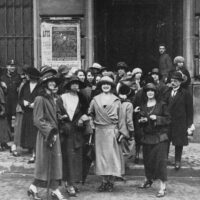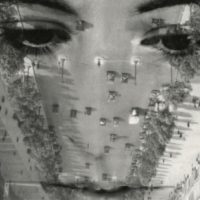000
100
%
Home Divisions and intersectional components
Divisions and intersectional components
9 thématiques - 7 divisions, 2 intersectional components
LARHRA is organised into seven areas/divisions:
Art, imagery, society;
Conflict;
Gender and society;
Regulation: trade, populations, movement;
Religion and belief;
Ideas;
Land, environment, health;
and 1 intersectionality; Digital humanities and media cultures.
These members are hosted by MSH Lyon Saint-Etienne and MSH-Alpes.
Divisions and intersectional components



Territory, Environment, Health
The area Territory, Environment, Health (TES) places at the heart of its work some of the major issues facing contemporary society, notably the interaction between the actions of human societies and environmental changes, and representations and policies pertaining to health.



Ideas
This area is concerned with the diversity of theoretical and abstract ideas; practical, technical, administrative and academic wisdom, as well as professional expertise, in all its historical dimensions.



Religions and Beliefs
This division follows in the footsteps of the Lyonnais school of religious history, which has had a major influence on scientific production since the 1960s, and intends to continue the renewal of its fields of research begun during the previous contract.



Regulation: trade, populations, movement
This area focuses on the mechanisms by which complex processes are regulated: the economics of regulation, the history of institutions, the study of public policy, and the history of populations.



Gender and Society
The historical approach to gender taken in this area focuses on the construction of the respective positions of men and women in past societies, and on the perception that the protagonists have of the gendered roles assigned to them.



Conflict
The field Conflict aims to study the history of societies in tension, i.e. societies plunged into situations of conflict that undermine their cohesion, their equilibrium, their functioning, and even the very principles on which they are founded. The chronological field considered ranges from the fifteenth century to the contemporary world.



Arts, Imagery, Society (ArtIS)
Arts, Imagery, Society (ArtIS) brings together LARHRA researchers who share an interest in the arts, images, and visual and material cultures in early modern, modern, and contemporary societies.
Transversalité "Histoire numérique et cultures médiatiques" déclinée en deux axes



Image-Sound-Memory (AtISM)
The workshop Image-Sound-Memory (AtISM) aims to develop and strengthen LARHRA's work on the analysis of images and sounds in the context of a contemporary visual, sound, and audiovisual history.



Digital Humanities
The Digital History Research Area (ARHN) aims to extend and develop the specific skills and experience acquired over more than ten years within the Digital History Unit, which are recognised both nationally and internationally.